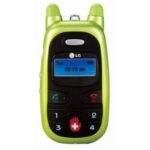Trafficland.com offers a startling array of live traffic camera views from around the world. In just a few clicks, you can access your hometown’s cameras (if Trafficland.com has the feed from your location). The site began with traffic cameras in Northern Virginia, a day before the tragedies on September 11. Instantly, the traffic cameras became invaluable as people sought to evacuate the area around the Pentagon. The media were able to use the site to gather information about local conditions.
Using Trafficland.com is very easy. Simply visit trafficland.com using your computer, PDA, or web-enabled cell phone. Choose your country (currently, the site offers cams from the US, Canada, Australia, the UK, Denmark, and New Zealand). Then choose your city from the resulting list. An area map with dots replaces the list. Hover your mouse over the little purple dots on the map. As you hover your mouse, the name of the traffic camera will appear. For example, if I choose Greensboro, NC, USA and hover over the dot where I-40 and Highway 68 come together, the name “I40 NC68” appears. By clicking on it, the camera loads and current traffic conditions are displayed.
It does take a little practice to get the mouse centered on the little purple dots. As you browse the map, your cursor changes to a hand. When you’re in the precise center of the dot, the hand changes to a pointing finger. Sometimes what looks like the center isn’t what the computer wants, and you have to search for that precise spot, moving your mouse ever-so-carefully.
When you choose a camera, the image loads to the left. Weatherbug places the current conditions to the bottom right. Of course, advertising abounds – but its placement is neither offensive nor overly obtrusive. If you truly dislike ads, consider paying for premium membership, which gets rid of them.
Enlarging the map does not enlarge the dots, but it does provide additional, extremely helpful information. On the left of the map is a slider much like popular online maps have. Move to the minus side and you zoom out to see a wider area. Move to the plus side and the map moves in to street level. You can click and drag the map to move it. On and off ramps are marked with direction, as are one-way streets and difficult interchanges. Since many city centers have only one-way streets, this feature will prove helpful in finding your way. The only downfall is that there does not seem to be a way to enter an address. You need to zoom out, find your area, then zoom back in and scroll to the street you want to see.
Another very helpful feature is the ability to toggle from street map to satellite to hybrid (satellite imagery with street names). First of all, if you’ve never been to an area, you can get a feel for what it will look like when you get there. You can even determine the location of the parking lot! However, since the satellite images are not “real time”, you won’t be able to tell how busy things are out there – you’ll have to rely on the traffic cameras for that!
Trafficland.com offers another invaluable feature to registered users. Simply click the register link on the upper right of the trafficland.com homepage. Signup is quick and simple. Registered users are able to save “favorite” traffic cameras. With just a few clicks before your commute, you can be sure that traffic is moving along at a good clip, and even plan an alternate route if there are snags.
Premium users get even more perks. Trafficland.com offers a free 30-day trial, and after that you pay just $5.95 per month. With trafficland.com’s premium service, the ads disappear and users can create multiple views with the cameras. Mobile users get live camera views and you can watch the cameras for five minutes without timing out (the free version seems to be 30 seconds, which is still very helpful for determining traffic conditions).
Another interesting feature is found at the very bottom of the page. Click the link named “Gallery”. There are three segments in the gallery – traffic, weather, and accidents. Traffic cameras pick up some amazing footage and history as it’s happening.
Trafficland.com also serves the media, transit authorities, and emergency services with multiple views of the cameras and expanded information via a subscriber system. Many broadcast and online media outlets, such as the Washington Post, rely on Trafficland.com for up-to-the-minute traffic information. These services are all offered through secure private networks. Trafficland also accepts city and government contracts to upgrade and integrate their traffic cams.
Can Trafficland.com survive in today’s turbulent online marketplace? In a word, yes. Their business model has allowed them to grow quickly – but not too quickly – and to gain acceptance among state and local governments and the media. Cities depend on Trafficland.com for emergency information – and as a result, the public does too (whether they know it or not). Venture capitalists have been generous, and the company’s US Attorney General John Ashcroft’s lobbying group. As advertising revenues and sales of premium services to consumers, media outlets, local governments, and public safety agencies increase, so will Trafficland’s opportunities to remain a rising star on the internet.







